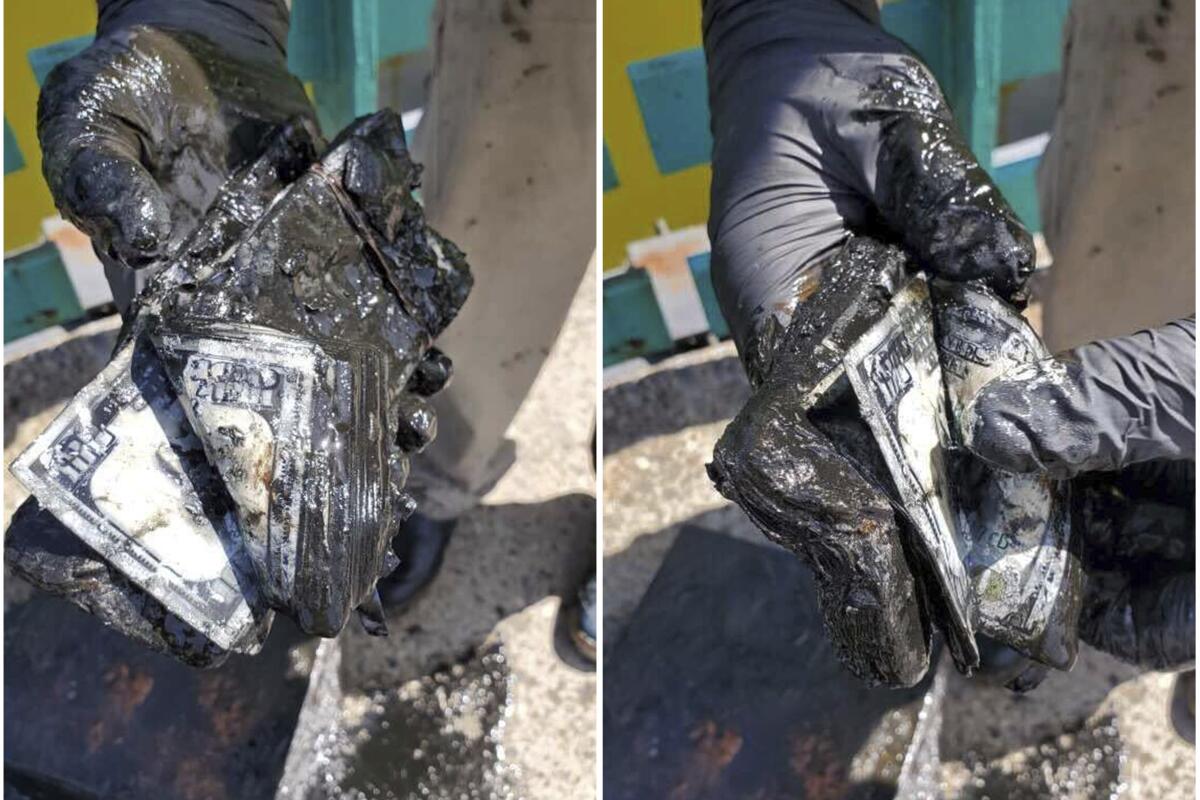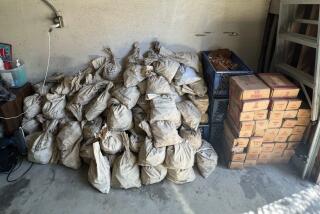New York magnet fisher catches safe full of soggy $100 bills, he says

- Share via
NEW YORK — James Kane has used a powerful magnet to fish all manner of junk from New York City waterways, but he says the stacks of $100 bills he pulled from a safe were something else entirely.
Kane’s girlfriend, Barbi Agostini, was recording last Friday as he pulled a slimy safe out of a lake in Flushing Meadows Corona Park, famous as the location of the 1939 and 1964 world’s fairs, and extracted bags of waterlogged, gunk-covered Benjamins from inside it.
“Oh, that’s money,” Kane said in the video of the discovery. “Oh, it is! Stacks of bills, dude!”
“Oh, my God!” Agostini says.
The couple estimates that the safe contained as much as $100,000, though the bills were partly decomposed and stuck together.
The discovery of a rare Byzantine-era mosaic has highlighted the need for better protection of Gaza’s antiquities.
The bills featured the 3-D security ribbon that indicates recent vintage, but the safe bore no clues to a rightful owner.
Kane and Agostini said they called the police to report their discovery and were told there was no evidence of a crime.
“They gave it to us, as, I guess you call it a finders keepers thing,” Kane said.
The New York Police Department’s public information office said in a statement that “the value and authenticity of the alleged currency” could not be determined due to its “severely disintegrated condition.”
Kane is far from the only magnet fisher who has made a mark in recent years.
Jewelry was found in burial mounds dating back 4,500 years. The hoard may provide a link to legendary Troy.
A magnet fisher found a human skull padlocked to an exercise dumbbell in New Orleans last month. Someone fishing in a creek in Georgia in April pulled up a rifle and some belongings of a couple who were killed nine years ago.
People who dabble in the hobby heave long ropes into the water attached to powerful magnets, some capable of staying latched to objects weighing 2,000 pounds (907 kilograms). They drag the lines through water and muck, hauling up objects that would likely go unfound by a beachcomber with a metal detector.
As magnet fishing videos rack up views on YouTube, skeptics grumble on Reddit that some of the finds must be fake.
Kane may just be lucky. He’s hauled up bicycles, guns, grenades, and jewelry from New York City waterways, promoting his exploits on YouTube, TikTok and Instagram.
The treasure hunters who discovered the gold-laden Spanish galleon Nuestra Senora de Atocha have found another part of the wreck that is yielding gold bars, money chains, silver coins and jewelry.
“I have seen and worked with other magnet fishers that can hit a spot for three months, and I’ll come along and throw the same magnet and get and find something that they’ve been trying to get the entire time,” he said. “I personally can’t explain that.”
Several of Kane and Agostini’s videos end with them calling the police to report that they have recovered weapons, with the officers donning gloves to examine the finds and take them away as potential evidence. In one, they documented a police bomb squad arriving to take possession of an old grenade. In another, they call police to turn over the contents of a safe filled with credit cards.
Kane, 40, said he and Agostini, 39, plan to take their soggy money to the Bureau of Engraving and Printing in Washington to redeem it, though he acknowledged some portion of the bills will likely be too damaged to recover.
The pair have ideas for spending whatever they end up with, including a new vehicle and upgrades to the equipment they use to produce content.
Frederick and Matthews write for the Associated Press.
More to Read
Sign up for Essential California
The most important California stories and recommendations in your inbox every morning.
You may occasionally receive promotional content from the Los Angeles Times.











